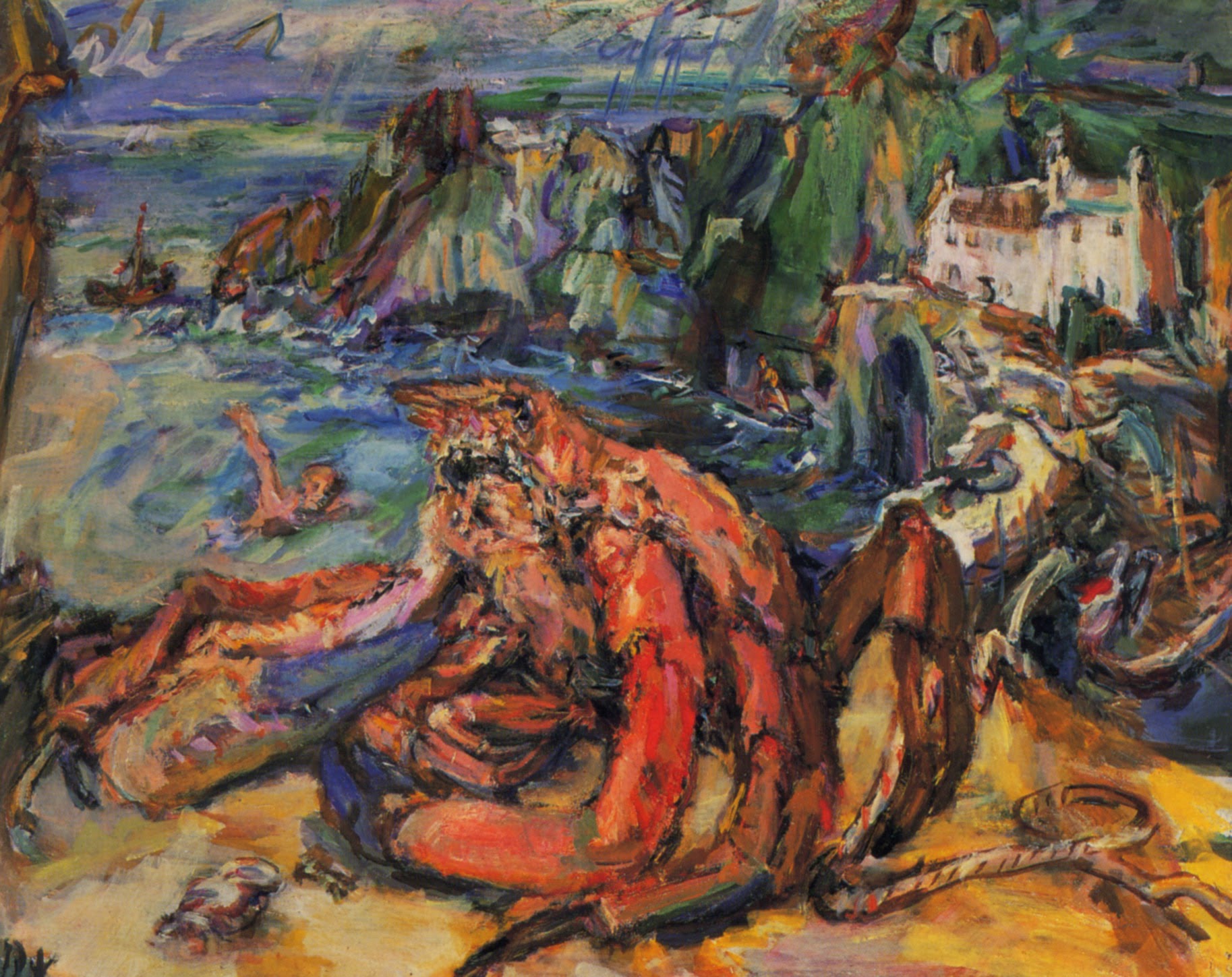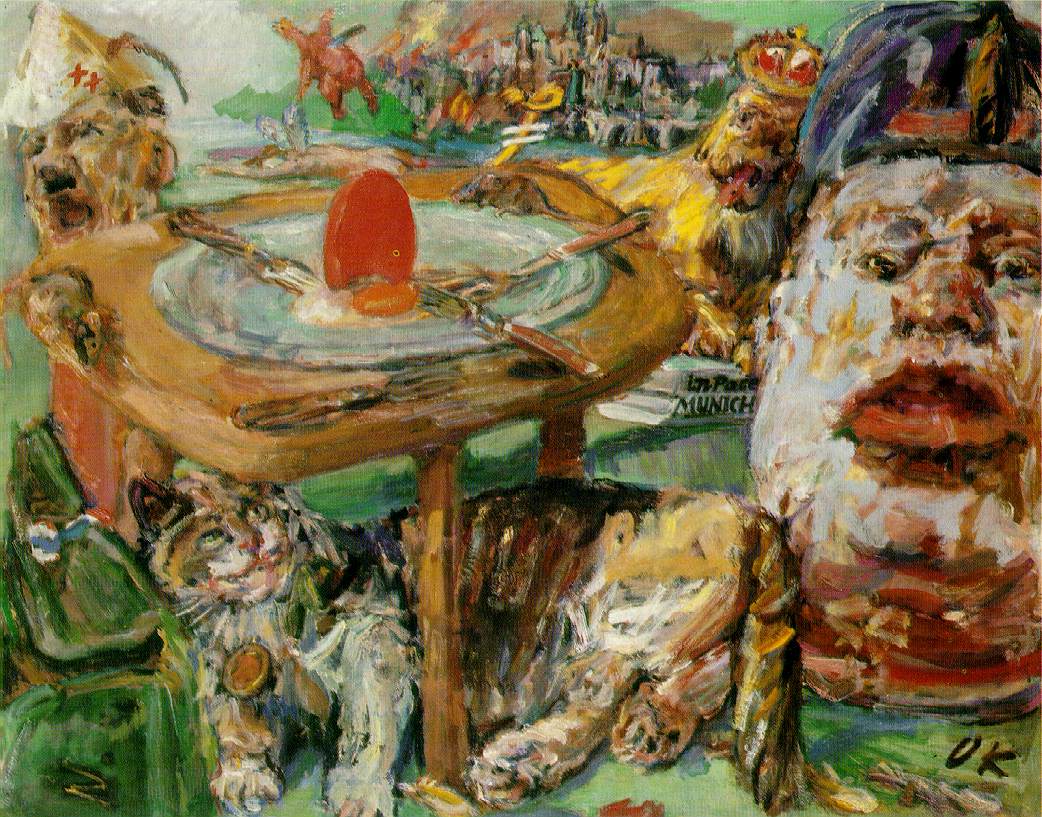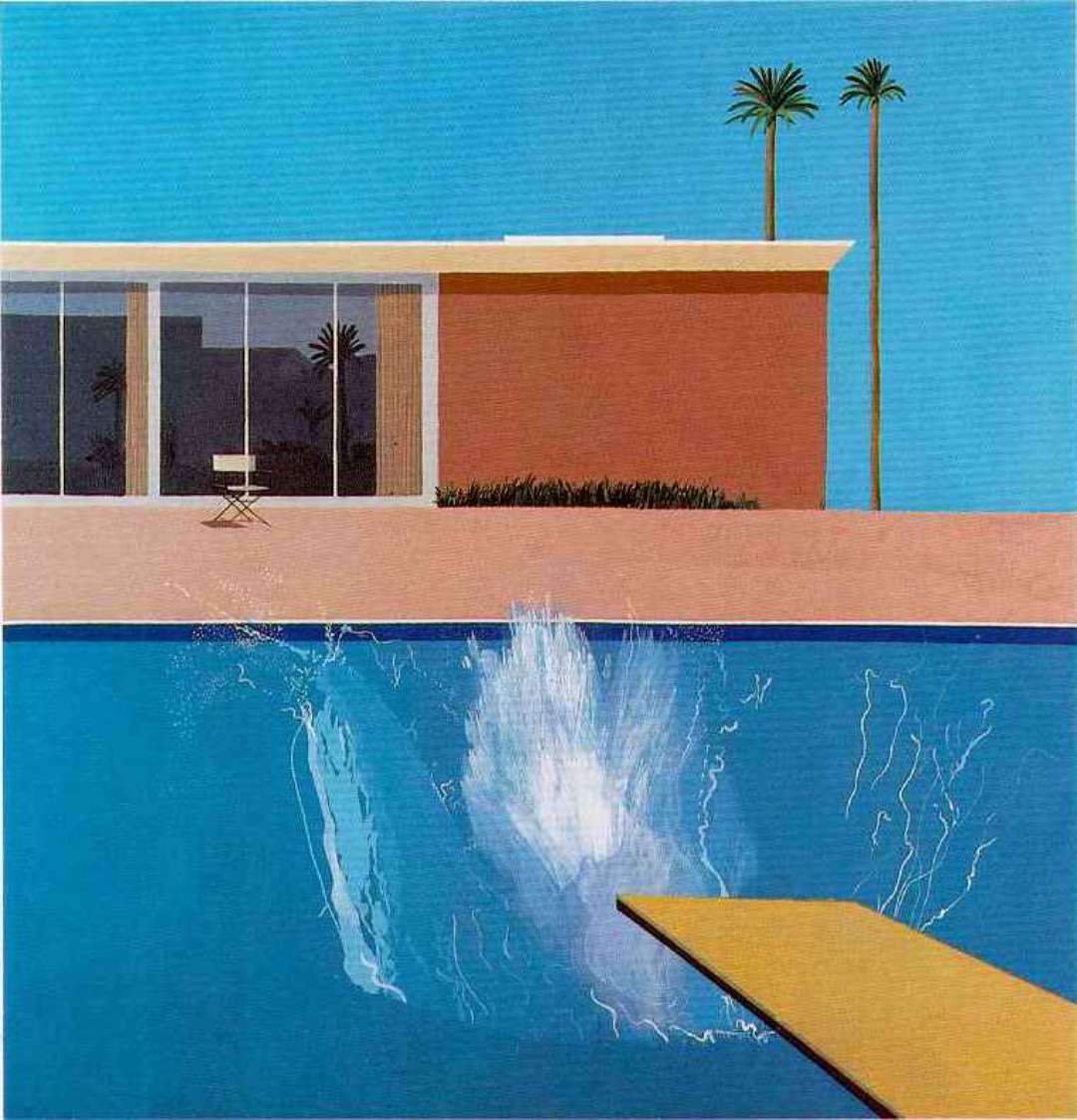Oskar Kokoschka, b. 1886, d. 1980, was an Austrian painter who was a strange guy and an amazing painter. The growth of his work over his life is guided by his emotional states, right up until his death in 1980.
His art career began in 1904 where he was accepted into the School of Arts and Crafts in Vienna. He hadn’t been trained in painting, so his early works are cartoonish and make use of line instead of value or paint treatment to define shapes.
His earliest works, or the First Stage, were largely him learning how to become a better artist. He did commissions for celebrities and made post-cards of his art.
 Nude with Back Turned, ink, gouache and chalk drawing, c. 1907
Nude with Back Turned, ink, gouache and chalk drawing, c. 1907
Kokoschka’s next works, from his Second Stage, were largely inspired by his mental and emotional states. He had an affair with Alma Mahler, the widow of the famous composer, Gustav Mahler, and after many years she rejected him. He became obsessed with her, and, as any love-sick soul, painted his magnum-opus, The Tempest. It was a self-portrait expressing his angst and love and etc towards Alma Mahler, who at this point did not return his affections.

The Tempest/Bride of the Wind, oil on canvas, 1913.
The he ran off to fight in the war. Too bad for him it was World War I. He was injured, got sent home, and then got sent to a sanatorium, because he was “mentally unfit.” That’s 1910s speak for PTSD. In 1918, Kokoschka commissioned a life-size doll to look like Alma Mahler. He was later frustrated at the doll’s inability to uh, perform as well as the real Alma, and decapitated the doll’s head at a party. Then poured a bottle of red wine over it’s head. As you do.
Nothing says getting over an ex-lover like a bacchanal.

The work Kokoschka made from his messy-not-break-up with Alma and his time during/after the war was very melancholic. The color palette was dominated by blues and greens and carried themes of loss, death, and unavoidably, war.

Knight Errant, oil on canvas, 1915

The Immigrants, oil on canvas, c. 1917
Unfortunately for Oskar Kokoschka, there was going to be another World War, but this time he would not be fighting for his country. He was labelled as a “degenerate” by the Nazi regime and fled to Prague, to try and wait things out. That didn’t work out, because, well, Hitler kept coming Eastwards, so he managed to flee to Great Britian, where he not only remained during World War II, but stayed for the rest of his life. I think his Third Stage as an artist began around this time, as his pieces became less overtly dark and emotional and matured into something more political and nuanced. At this point, Kokoschka was also in his mid-late fifties, so he was getting older.

The Crab, 1940.

The Red Egg, 1941
The beginning of his third stage dealt with a lot of detail and political themes, whereas the end of his third stage, and his life, his color palette had lightened up, his brush strokes became looser, and from what I can tell, they are not overly-emotional or political.

The Rejected Lover, 1966

Time, Gentlemen, Please, 1917.
The progression of Kokoschka’s work over his long life (and dude had a long life– 94 years!) is very interesting to see, especially the distilling of his style near the end of his life. I’m looking forward to my Third Stage (but not the part that comes inevitably after L O L.)







 Pearblossom Highway, 1986
Pearblossom Highway, 1986 Stage Design for Tristan and Isolde, Act II, 1987
Stage Design for Tristan and Isolde, Act II, 1987
